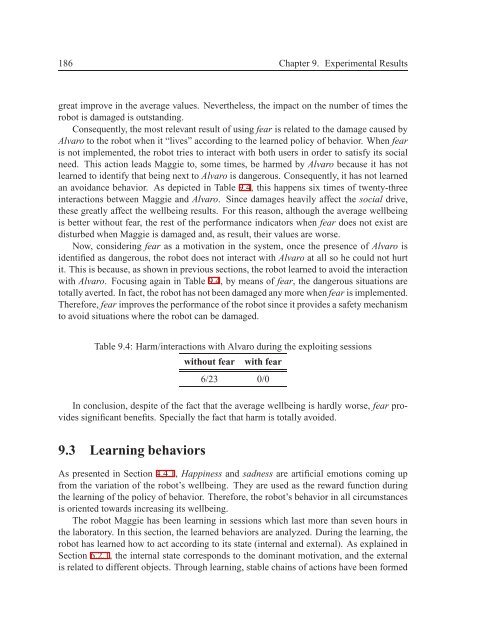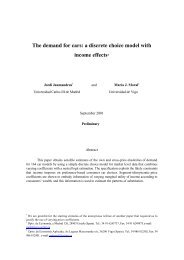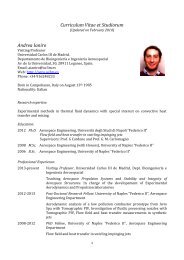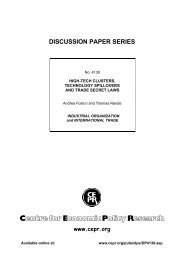TESIS DOCTORAL - Robotics Lab - Universidad Carlos III de Madrid
TESIS DOCTORAL - Robotics Lab - Universidad Carlos III de Madrid
TESIS DOCTORAL - Robotics Lab - Universidad Carlos III de Madrid
Create successful ePaper yourself
Turn your PDF publications into a flip-book with our unique Google optimized e-Paper software.
186 Chapter 9. Experimental Resultsgreat improve in the average values. Nevertheless, the impact on the number of times therobot is damaged is outstanding.Consequently, the most relevant result of using fear is related to the damage caused byAlvaro to the robot when it “lives” according to the learned policy of behavior. When fearis not implemented, the robot tries to interact with both users in or<strong>de</strong>r to satisfy its socialneed. This action leads Maggie to, some times, be harmed by Alvaro because it has notlearned to i<strong>de</strong>ntify that being next to Alvaro is dangerous. Consequently, it has not learnedan avoidance behavior. As <strong>de</strong>picted in Table 9.4, this happens six times of twenty-threeinteractions between Maggie and Alvaro. Since damages heavily affect the social drive,these greatly affect the wellbeing results. For this reason, although the average wellbeingis better without fear, the rest of the performance indicators when fear does not exist aredisturbed when Maggie is damaged and, as result, their values are worse.Now, consi<strong>de</strong>ring fear as a motivation in the system, once the presence of Alvaro isi<strong>de</strong>ntified as dangerous, the robot does not interact with Alvaro at all so he could not hurtit. This is because, as shown in previous sections, the robot learned to avoid the interactionwith Alvaro. Focusing again in Table 9.4, by means of fear, the dangerous situations aretotally averted. In fact, the robot has not been damaged any more when fear is implemented.Therefore, fear improves the performance of the robot since it provi<strong>de</strong>s a safety mechanismto avoid situations where the robot can be damaged.Table 9.4: Harm/interactions with Alvaro during the exploiting sessionswithout fearwith fear6/23 0/0In conclusion, <strong>de</strong>spite of the fact that the average wellbeing is hardly worse, fear provi<strong>de</strong>ssignificant benefits. Specially the fact that harm is totally avoi<strong>de</strong>d.9.3 Learning behaviorsAs presented in Section 4.4.1, Happiness and sadness are artificial emotions coming upfrom the variation of the robot’s wellbeing. They are used as the reward function duringthe learning of the policy of behavior. Therefore, the robot’s behavior in all circumstancesis oriented towards increasing its wellbeing.The robot Maggie has been learning in sessions which last more than seven hours inthe laboratory. In this section, the learned behaviors are analyzed. During the learning, therobot has learned how to act according to its state (internal and external). As explained inSection 6.2.1, the internal state corresponds to the dominant motivation, and the externalis related to different objects. Through learning, stable chains of actions have been formed






